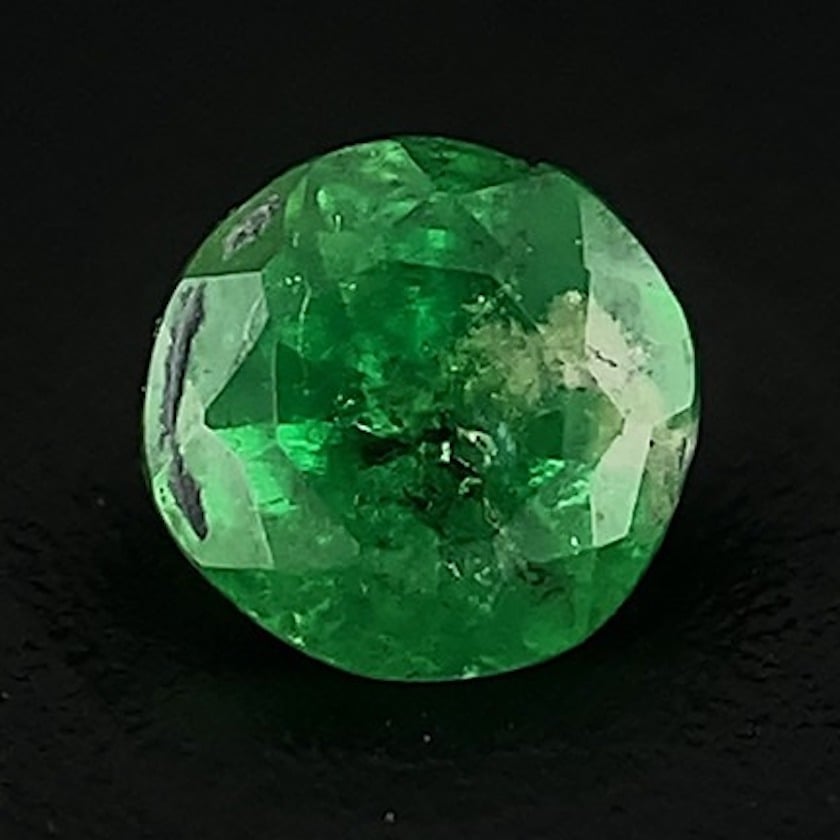Uvarovite Garnet Value, Price, and Jewelry Information
Always a dark, rich green color, uvarovite is one of the rarest members of the garnet family. Usually only seen as druzy on matrix, these crystals are seldom faceted.
2 Minute Read
Always a dark, rich green color, uvarovite is one of the rarest members of the garnet family. Usually only seen as druzy on matrix, these crystals are seldom faceted.
Start an IGS Membership today
for full access to our price guide (updated monthly).Uvarovite Garnet Value
For information on quality factors for uvarovites and other garnets, consult our garnet buying guide.
Does Uvarovite Make a Good Jewelry Stone?
Since uvarovite crystals are usually opaque, only small corners of larger crystals have the transparency needed for faceting. Faceted pieces hardly ever exceed one carat in weight. Since these garnets are so rare, a cut specimen of any size would make a coveted prize for a collector. Due to the small size of the finished gems, recommended cuts for uvarovites include freeform designs and shallow checkerboards.
It's a shame that these garnets with emerald-like deep green color are so rarely found. Faceted uvarovites would make wonderful jewelry stones. Uvarovites have no cleavage and a hardness of 6.5 to 7.5. Thus, faceted specimens would make durable jewelry stones. However, uvarovite druzy specimens have also been used in beautiful raw stone designs.
How to Distinguish Uvarovites from Other Deep Green Garnets
Just like many emeralds, uvarovites also get their color from chromium (Cr). However, other garnet species also contain chromium, such as demantoid (andradite) and some tsavorite (grossular). These fellow garnets also share their deep green color range.
Demantoid's specific gravity (3.82-3.88) exceeds that of uvarovite (3.40-3.80, usually 3.71-3.77). The lower end of uvarovite's typical specific gravity range falls within that of tsavorite's (3.55-3.73), but uvarovites can also have lower and higher specific gravity values than tsavorites. Tsavorites and uvarovites also have just a slight overlap of refractive index ranges (1.72-1.744 and 1.74-1.87, respectively).
Why are Some Uvarovites Birefringent?
Although garnets are isometric, their optical properties can vary based on their chemistry. The presence of a large Ca (calcium) atom in uvarovite may make some specimens birefringent. This may be due to strain or symmetry reduction. Monoclinic, orthorhombic, and triclinic symmetry does occur in natural uvarovites.
Are There Synthetic Uvarovites?
Synthetic uvarovite has been used to study garnet series. Scientists have also synthesized uvarovite crystals via the flux method as part of the study of the natural birefringence mentioned previously. However, there is no known jewelry use of this material.
For information on other synthetic garnets, see the Synthetics section of our main garnet gem listing.
There are no known enhancements for uvarovites.
Where are Uvarovite Garnets Found?
The best known source of gem-quality uvarovites, Outokumpu, Finland produces large, fine green crystals.
Other notable sources include
- United States: Northern California (in chromite deposits); Oregon.
- Afghanistan; Thetford, Quebec, Canada; China; Norway; Russia (fine crystals); South Africa.
Stone Sizes
Even though crystals may reach a size of 1-2 inches, the occasional piece with a transparent corner would likely yield a faceted gem of less than a carat.
How to Care for Your Uvarovite Garnet Jewelry?
Despite the durability of uvarovites and garnets in generals, these stones do have heat sensitivity. So, whether your gems belong in a mineral collection or jewelry box, clean them with warm water, detergent, and a soft brush.
Druzy uvarovites should first be cleaned carefully with compressed air. Brush carefully, since physical contact can knock loose some crystals from their matrix. Druzy pieces that have smaller crystals and little or no exposed matrix will make more durable jewelry stones.
Consult our gemstone jewelry cleaning guide for more recommendations.
Joel E. Arem, Ph.D., FGA
Dr. Joel E. Arem has more than 60 years of experience in the world of gems and minerals. After obtaining his Ph.D. in Mineralogy from Harvard University, he has published numerous books that are still among the most widely used references and guidebooks on crystals, gems and minerals in the world.
Co-founder and President of numerous organizations, Dr. Arem has enjoyed a lifelong career in mineralogy and gemology. He has been a Smithsonian scientist and Curator, a consultant to many well-known companies and institutions, and a prolific author and speaker. Although his main activities have been as a gem cutter and dealer, his focus has always been education. joelarem.com
International Gem Society
Related Articles
Five Tips for Your First Gem Show
Identifying Garnets Simplified
Garnet Buying Guide
Black Diamond Value, Price, and Jewelry Information
Latest Articles
800 Years of Mogok: A Celebration in Tenuous Times
What is the Average Gemstone Faceting Yield?
Pyroxmangite Value, Price, and Jewelry Information
How to Identify Emerald Simulants and Synthetics
Never Stop Learning
When you join the IGS community, you get trusted diamond & gemstone information when you need it.
Get Gemology Insights
Get started with the International Gem Society’s free guide to gemstone identification. Join our weekly newsletter & get a free copy of the Gem ID Checklist!
